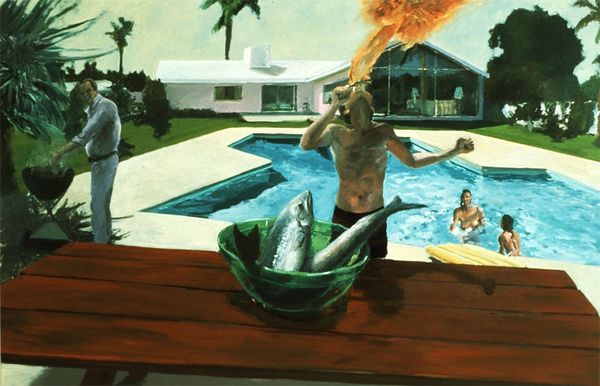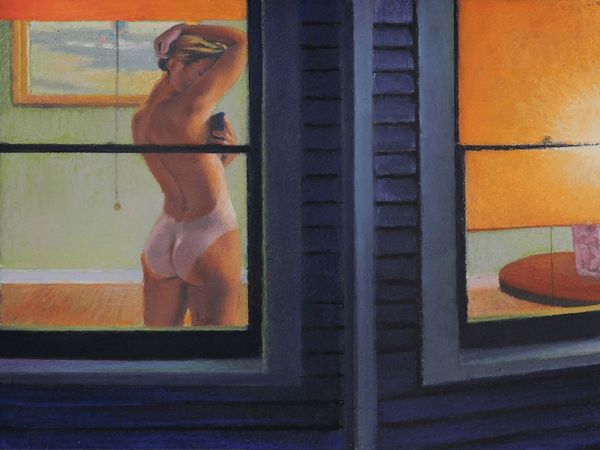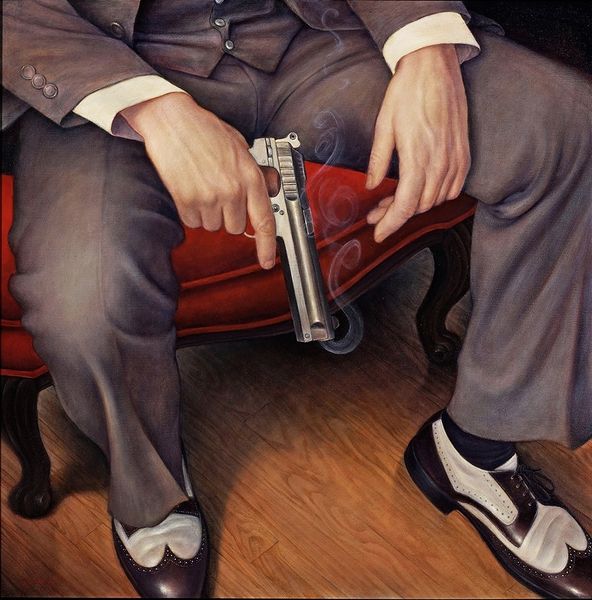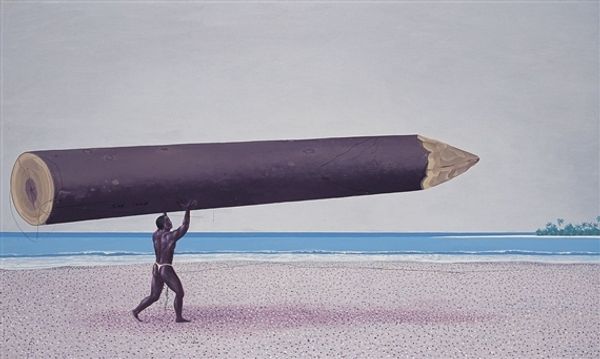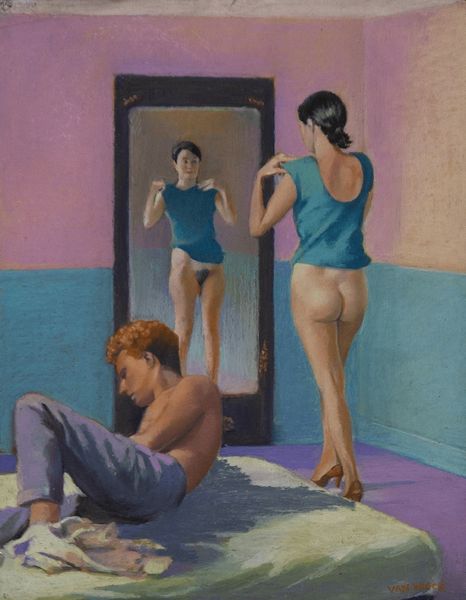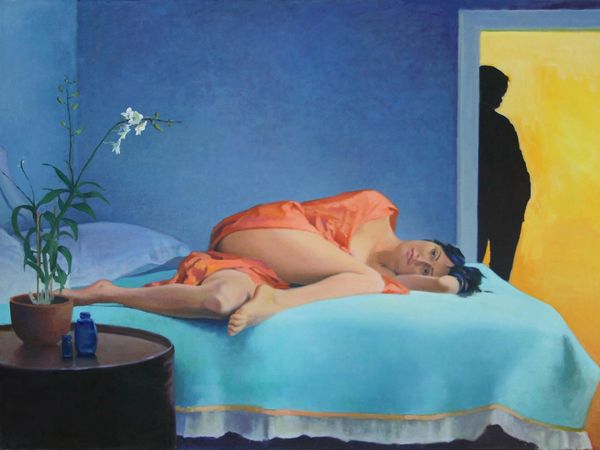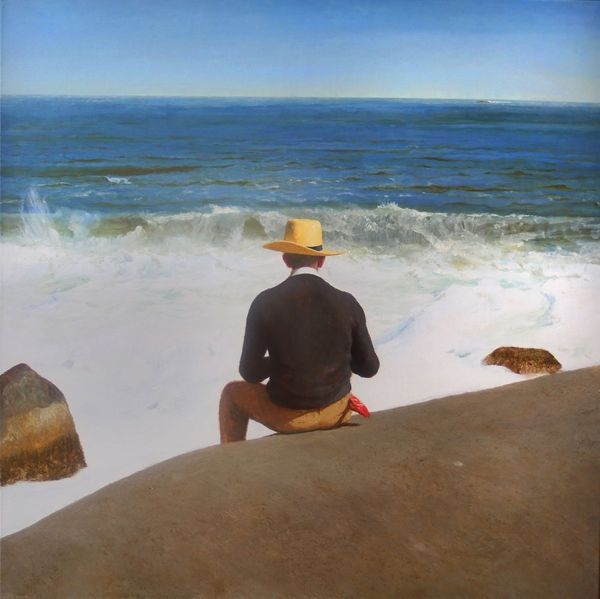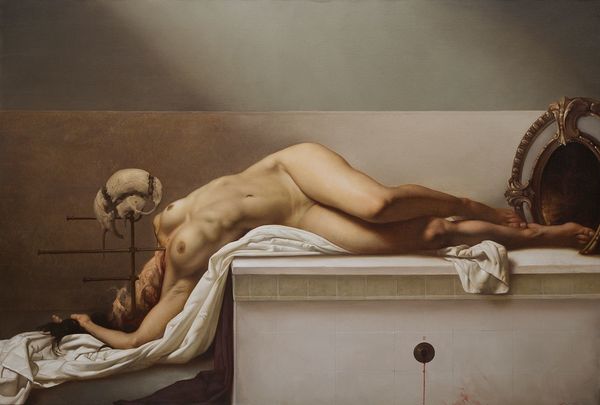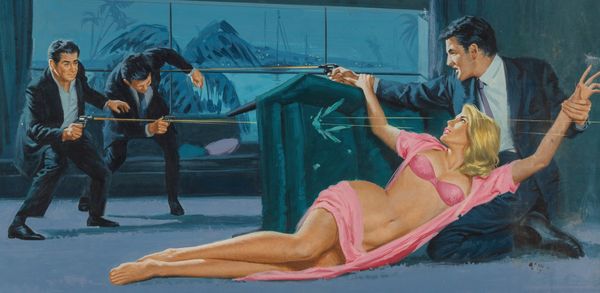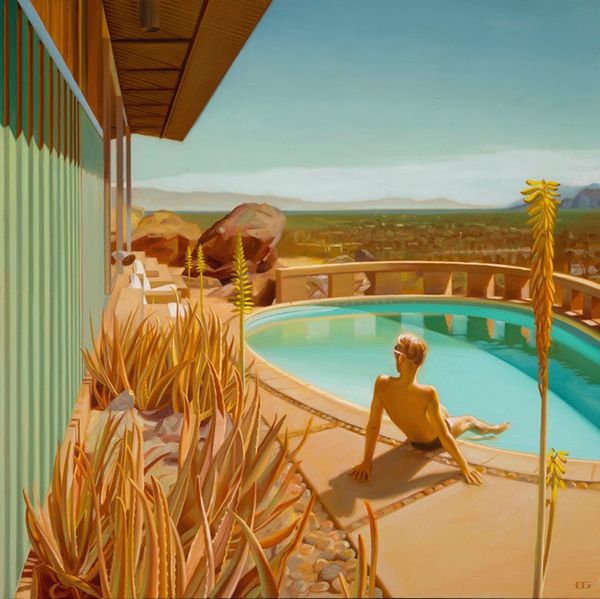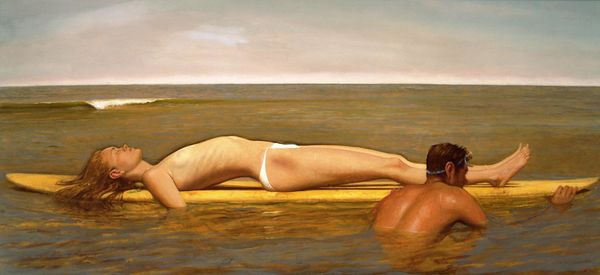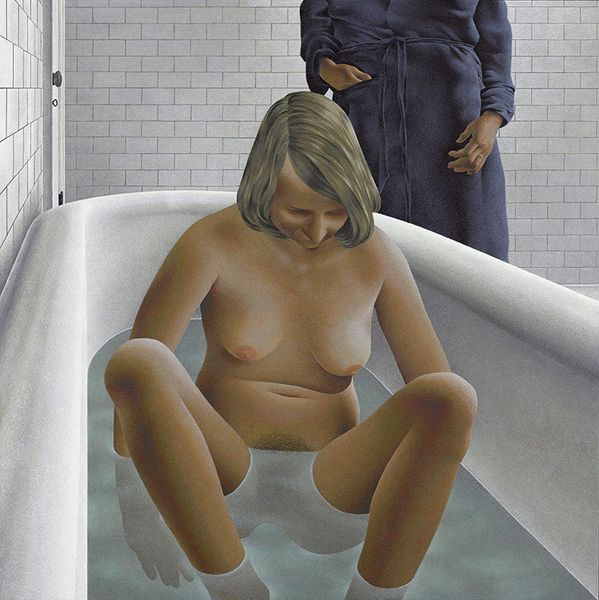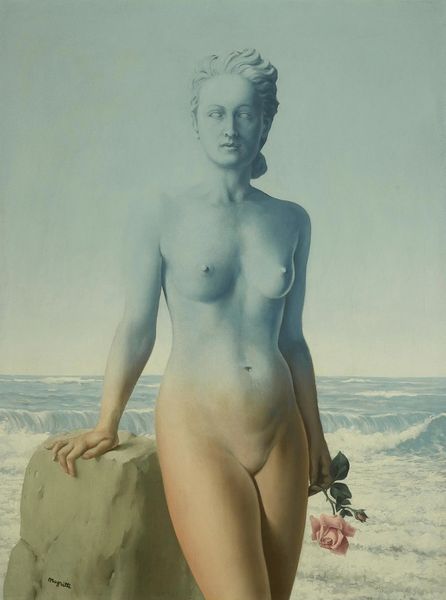
tempera, painting
#
portrait
#
tempera
#
painting
#
landscape
#
genre-painting
#
modernism
#
realism
Copyright: A.C.Fine Art Inc.
Editor: This is Alex Colville's "Pacific," a tempera painting from 1967. The contrast between the tranquil ocean view and the gun on the table is immediately striking and a bit unsettling. What stands out to you in this piece? Curator: The unsettling contrast you mention is exactly where my focus lies. Tempera itself is significant, requiring a dedicated labour process, demanding precise application to build those layered textures. But consider the gun - a manufactured object of violence - juxtaposed with the handmade painting depicting the vast Pacific. It provokes questions about the labour and the power structures at play during its creation. Editor: I see what you mean. So it's not just the image, but also thinking about how it was made and what those materials represent in the larger context of the time? Curator: Precisely. Think about 1967, the Cold War, escalating tensions… Colville positions a weapon, an object manufactured for one purpose: to kill or control – on what looks like a carefully crafted table marked with units, all this versus the seeming boundlessness of nature. Does this placement somehow implicate painting itself within systems of power and control, challenging the notion that 'high art' is detached from societal issues? Editor: That really makes me reconsider how I see the painting. It's not just a realistic depiction; it’s actively commenting on industry and conflict of the time. Curator: Exactly. How materials, mass-production of weapon against what is humanely created or found in nature…what can you bring back to this thought from today’s lens? Editor: The tension Colville creates, through his specific material choices and this imagery, is still incredibly relevant today when looking at contemporary discussions on production and how that is perceived across class and country. It definitely shifts how I’ll approach art in the future.
Comments
No comments
Be the first to comment and join the conversation on the ultimate creative platform.
